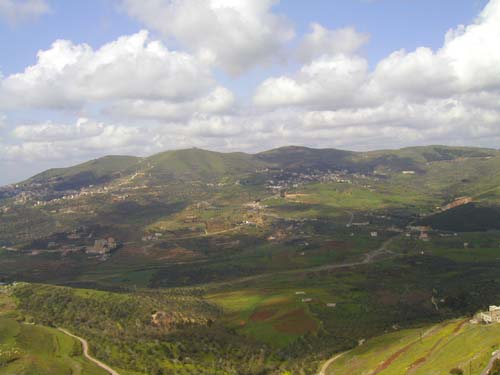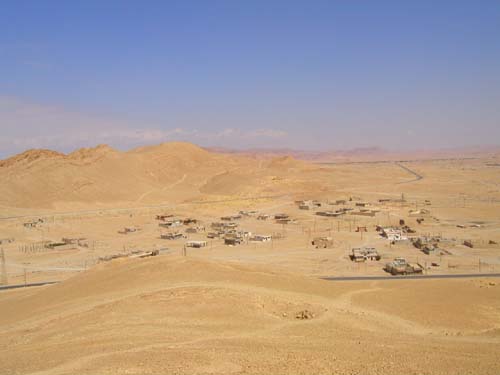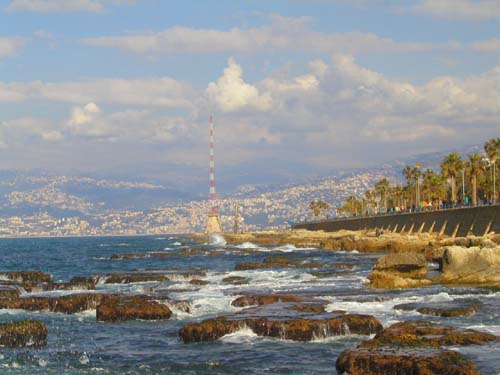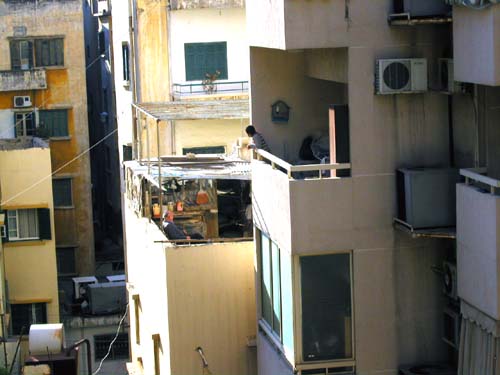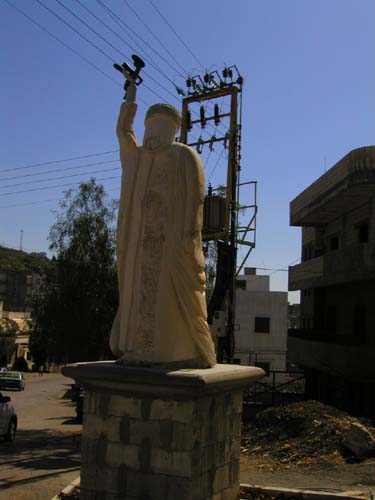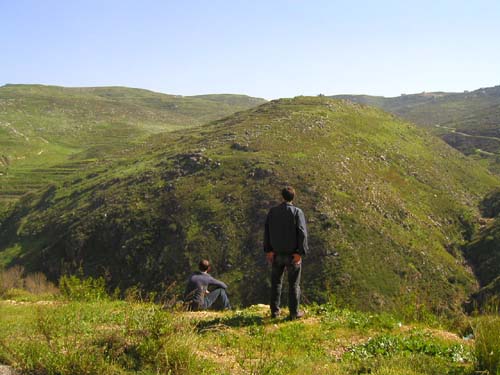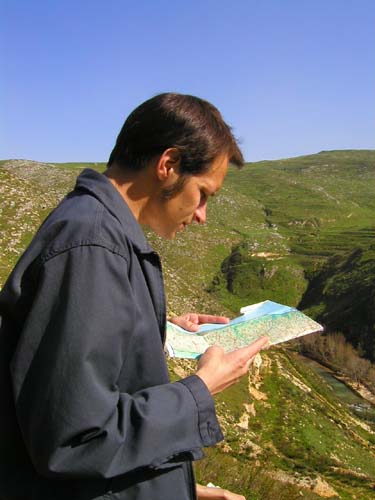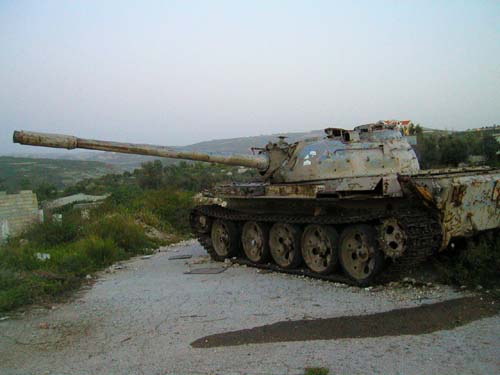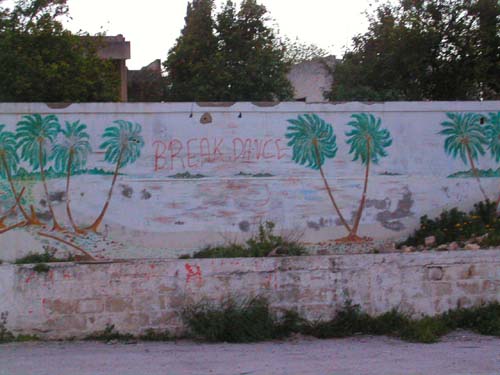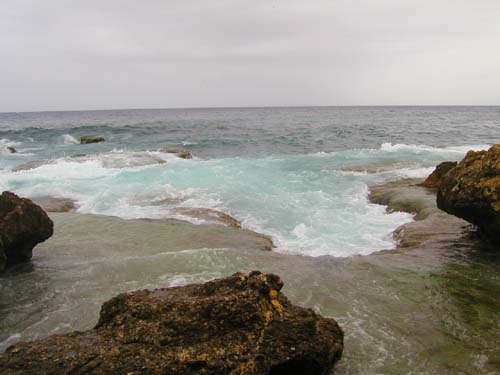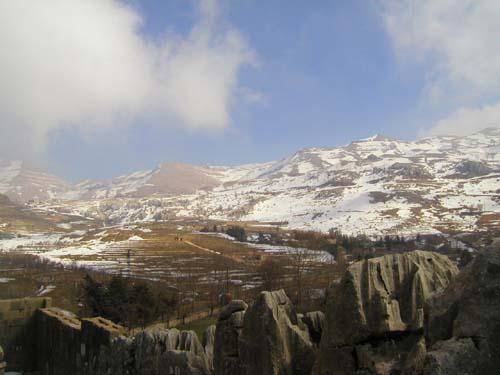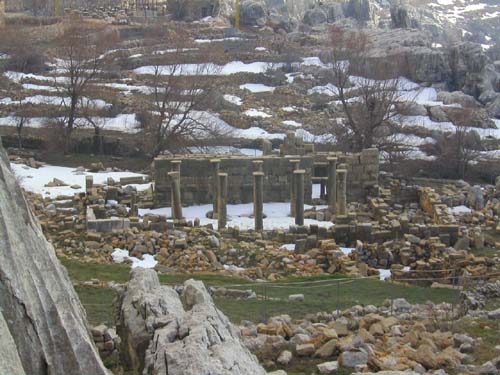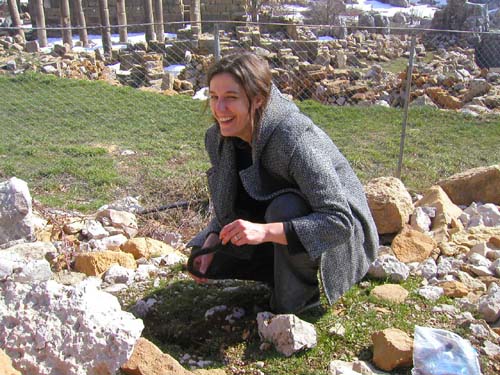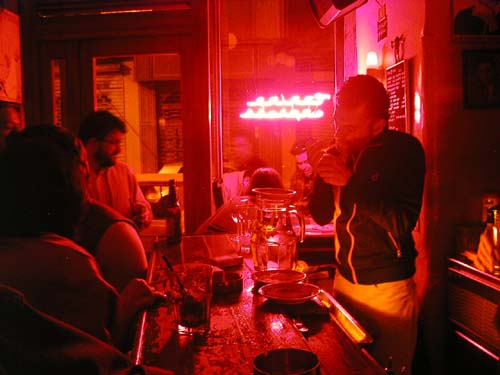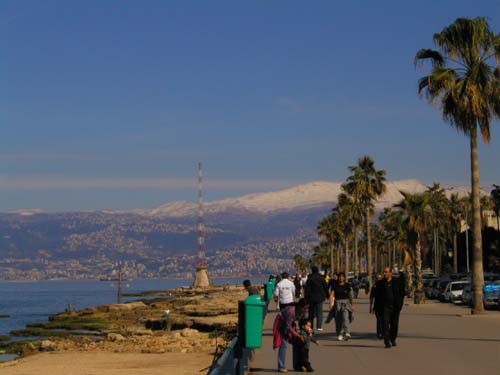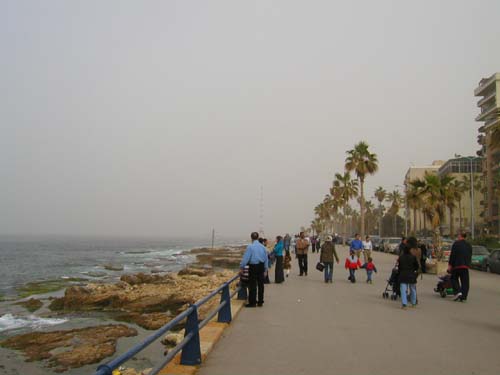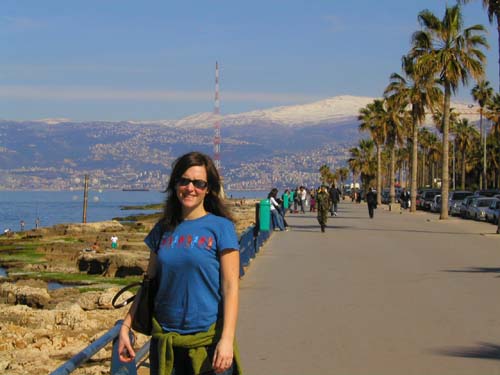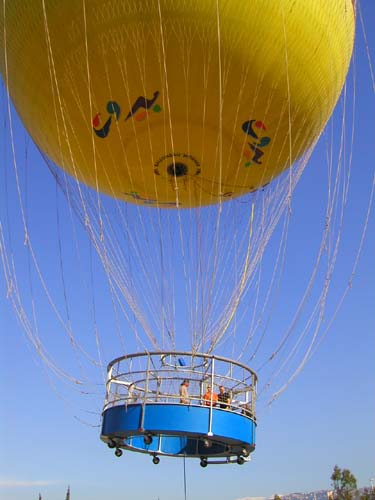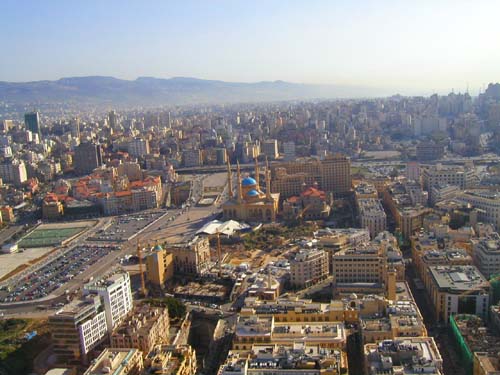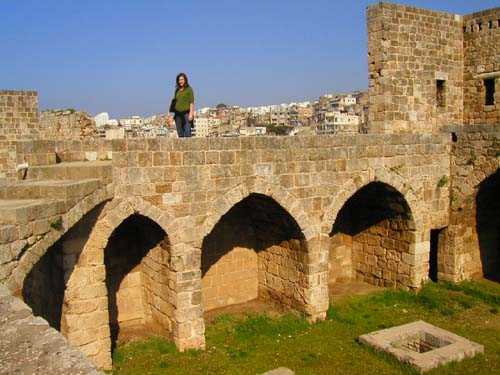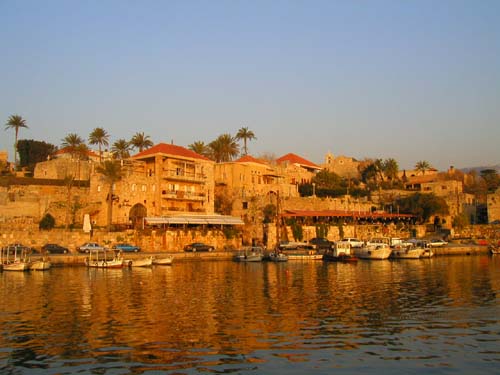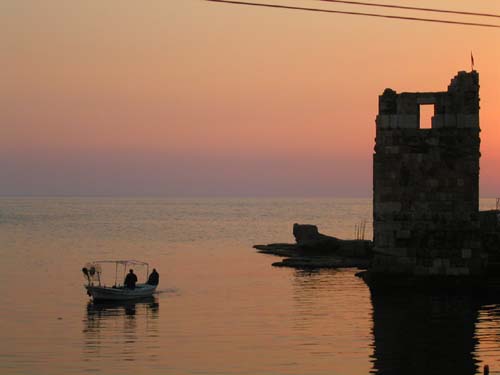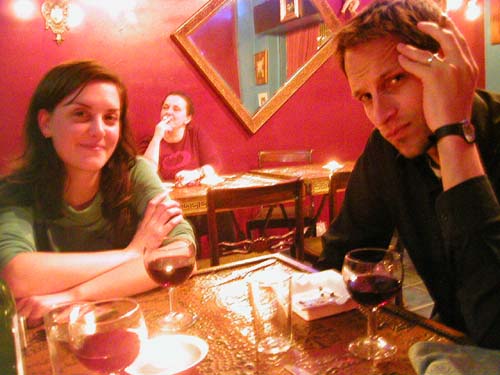Tue 21 Mar 2006

Sunday morning, we took a rickety bus through the desert to Homs. Once there, we intended to take a minibus to Hama, but found that we were at the wrong station. An old gentleman sympathized and patiently explained in Arabic that we needed to go to a different station, and that we could take the city bus that had just pulled up down the street. As this was sinking in, he determined that we were not entirely convinced, and led us to the bus, told the driver where we wanted to go, and told us how much to pay. You simply cannot stay lost in Syria, someone will always come and help you find your way.
We crammed onto a minibus and headed to Hama. We found our hotel by reasoning that we should be walking downhill, since the center of town is near the Orontes River. Hama is the fourth largest city in Syria, and it was bustling. I peered into a dark tub of water in front of a shop, and a man dipped his hand in and pulled out a big, wriggling fish to show me.
We checked into our hotel and went to wander around to take in the scene. Hama is well known for its norias, or water wheels. These (or versions of them) have been here since the 5th century and are still in use to scoop water out of the river for irrigation. They only turn for part of the year, though, and are not turning now. You can find norias all over the world, but the biggest ones are in Hama.
Hama is also known as the site of a massacre by the Syrian government in 1982. Government troops came in to beat down a Muslim Brotherhood uprising, and beat it down, they did. Somewhere between 10,000 and 20,000 people were killed, and most of the old town was razed to the ground. There is only a small section of it left, which we explored in about 15 minutes. There are no memorials or even any real acknowedgement by the Syrian government. This happened when the current president’s father, Hafez Assad, was in control.
Expect this to be some sort of major justification for going after the Syrian government, should the Bush Administration decide to really do so. There is precedent for this with taking down Saddam Hussein– “he gassed his own people [the Kurds]”. True, but the U.S. didn’t care about it for well over a decade, until it served their purposes to do so.
I digress.
On Monday, we decided to visit Krak des Chevaliers, one of the world’s finest crusader castles. T.E. Lawrence claimed it was the greatest castle in the world. Ethan had a castle book as a kid in which this castle was prominently featured. We could have made the trip by public transport, on a series of minibuses, but we decided to have the hotel get us a taxi and driver. Some other guests, a couple from New Zealand decided to come along with us, so it ended up being pretty cheap. The Kiwis were pretty interesting, being over 3/4 of the way through with a 2 year long journey around the world. We heard of their adventures on the taxi ride. They encouraged us to spend some time in Buenos Aires, which we are inclined to do.
The castle is quite well preserved, and you can climb and wander freely. The area itself is absolutely gorgeous with rolling green hills. In some of the valleys we passed through, I found myself looking for hobbits or unicorns. A fitting end to our last mini-trip (Ethan’s 5th and my 7th) to Syria.

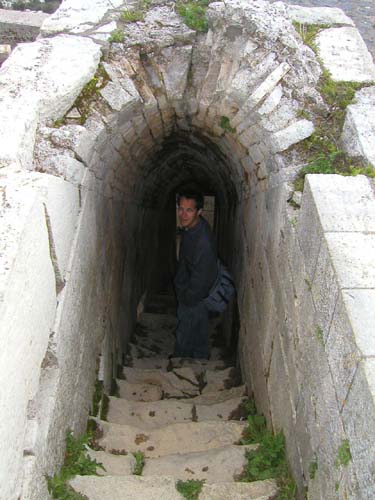

This was our taxi. Fantastic.
